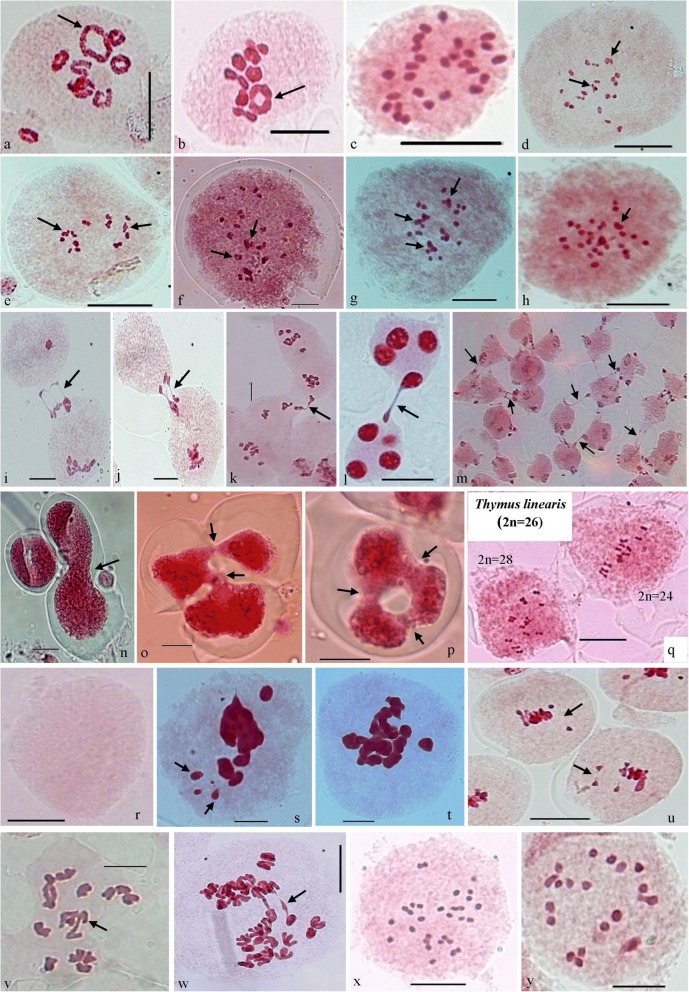Fig. 1.
Various Meiotic deformities during meiosis. a) Achillea millefolium (2n=18); A PMC with 7II+1IV (typical ring, arrowed) at diakinesis. b) A. millefolium (2n=18); PMC with 7II+1IV (typical ring, arrowed) at M-I. c) Erigeron annuus (2n=27); A PMC with 27I at M-I. d & e) Carduus nutans (2n=40); PMCs showed multivalents (arrowed) at M-I. f) Geranium pratense (2n=56); PMC with multivalents (arrowed) at M-I. g & h) Taraxacum officinale (2n=32); PMCs showed multivalents (arrowed) at M-I. i) Two PMCs involved in chromatin transfer (arrowed) at P-I. j) Two PMCs involved in chromatin transfer (arrowed) at M-I. k) Two PMCs involved in chromatin transfer (arrowed) at A-I. l) Two PMCs involved in chromatin transfer (arrowed) at T-II. m) Group of PMCs involved in cytomixis (arrowed). n) Fusion of two monads. o) Intermicrosporal chromatin transfer among microspores of three tetrads. p) Cytoplasmic channels among microspores of a tetrad forming ring. q) Hypoploid (2n=24) and Hyperploid (2n=28) PMCs in Thymus linearis (2n=26). r) An enucleated PMC. s) A PMC at M-I showing pycnotic materials (arrowed). t) A PMC at M-I showing chromatin stickiness. u) Two PMCs at M-I showing early disjunction of bivalents (arrowed). v) A PMC at A-I showing late disjunction of chromosomes (arrowed). w) A PMC at A-I showing chromatin bridges (arrowed). x) Dianthus angulatus (2n=30); A PMC with 30I at M-I. y) Inula cuspidata (2n=20); A PMC with 20I at M-I

